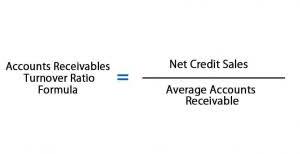
The Inflation Reduction Act represents the largest climate investment in US history, including $370 billion of new energy-related tax credits over the next 10… Browse our Private Company Perspectives collection for insights and evolving trends for private companies. Using the same example for Pinky’s Popsicles, you can easily calculate COGS and ending inventory using this table. It breaks down each transaction so you can see and understand precisely how Pinky’s perpetually tracks the inventory.
The grocery store’s approach reflects the FIFO inventory method, which assumes that the store sells its oldest inventory items first. That means that you’ll use the oldest costs to calculate the cost of goods sold. B is incorrect because if inventory unit costs rise and LIFO liquidation occurs, an inventory-related increase, and not decrease, in gross profits will occur. The LIFO method is attractive for American businesses because it can give a tax break to companies that are seeing the price of purchasing products or manufacturing them increase. However, under the LIFO system, bookkeeping is far more complex, partially in part because older products may technically never leave inventory.
LIFO Liquidation
On Dec 31, Brad looks through the store sales and realizes that Brad’s Books has sold 450 books to-date. Brad would now like to run a report for his partners that shows the cost of goods sold. Now, let’s consider the cost of goods sold (COGS) and the ending inventory for this company under both LIFO and FIFO at the end of Year 3.

Investors also analyze the LIFO Reserve before investing as it is part of profit or retained earnings. LIFO Reserve represents the difference in inventory valuation between the Last-In, First-Out (LIFO) and First-In, First-Out (FIFO) inventory accounting methods. LIFO assumes that the most recently purchased items are sold first, impacting cost of goods sold and taxes.
LIFO vs. FIFO: Choosing the Right Inventory Identification Method
This adjustment helps provide a more accurate picture of a company’s financial position. From this example, we can see a big difference between the two types of inventory methods. By doing little tweaks in the formula for LIFO Reserve, the financial statements of what is lifo reserve a business using LIFO and another company using FIFO methods can be made comparable. The key takeaway here is that when you’re calculating the cost of goods sold or ending inventory using periodic FIFO, the date on which the company sold the goods doesn’t matter.

The gross profit on these units is higher than the gross profit that would be recognized using more current costs. These inventory-related profits caused by LIFO liquidation are however one-time events and are unsustainable. The LIFO method is applied for external reports, such as tax returns, given that the LIFO method assigns a higher cost to the goods sold during the year. By raising the cost, less taxable income is reported on the income statement; thus, the overall tax expense is also reduced. In order for external users to not be mislead about the true value of inventory, cost of goods sold, and profitability of the company, there needs to be a reconciliation between the two valuation methods.
Why is the LIFO reserve necessary?
The LIFO method goes on the assumption that the most recent products in a company’s inventory have been sold first, and uses those costs in the COGS (Cost of Goods Sold) calculation. If the cost of inventory rises over time (inflationary environment), then the LIFO method will typically result in a higher cost of goods sold (COGS) and lower profits, thus less tax. The LIFO Reserve in this scenario will be a positive amount, since FIFO inventory is higher than LIFO inventory. By valuing inventory using LIFO, they can reduce taxable income and defer taxes. LIFO, or Last-In, First-Out, is one of the methods used for valuing inventory.
- Accounting professionals have discouraged the use of the word “reserve,” encouraging accountants to use other terms like “revaluation to LIFO,” “excess of FIFO over LIFO cost,” or “LIFO allowance.”
- A company must be able to track the specific costs of each item of inventory.
- It sells 50 exotic plants and 25 rose bushes during the first quarter of the year for a total of 75 items.
- Financial ratio analysis offers great insight into the performance of the company.
- The year-to-year changes in the balance within the LIFO reserve can also give a rough representation of that particular year’s inflation, assuming the type of inventory has not changed.

Recent Comments